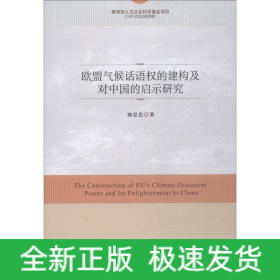
高速铁路轨道动力学
全新正版 极速发货
¥ 131.18 6.6折 ¥ 198 全新
仅1件
广东广州
认证卖家担保交易快速发货售后保障
作者Xiaoyan Lei
出版社科学出版社
ISBN9787030534866
出版时间2017-08
装帧精装
开本其他
定价198元
货号1201531132
上书时间2024-09-06
- 最新上架
商品详情
- 品相描述:全新
- 商品描述
-
作者简介
Xiaoyan Lei is a professor and doctoral supervisor of East China Jiaotong University, chair professor of Jiangxi Jinggang Scholars, and director of Railway Environmental Vibration and Noise Engineering Research Center of the Ministry of Education. He received his Ph.D. degree in solid mechanics from Tsinghua University in 1989. He served as a visiting scholar at University of Innsbruck, Austria,during 1991-1994, a visiting professor at Kyushu Institute of Technology, Japan, in 2001, and a senior research fellow at the University of Kentucky, USA, in 2007. He has been awarded many academic titles including the first- and second-rank talents of the National Talents Project, the leading personnel of key disciplines and technologies of Jiangxi Province and the leading talent of Jiangxi Ganpo Talent Candidates 555 Program. His academic positions include the senior member of American Society of Mechanical Engineers (ASME), executive director of China Communication and Transportation Association, director general of Theoretical and Applied Mechanics Society of Jiangxi Province, and deputy director general of Railway Society of Jiangxi Province. In addition, he works as the editorial member of Journal of the China Railway Society, Journal of Railway Science and Engineering, Journal of Urban Mass Transit, Journal of Transportation Engineering and Information,International Journal of Rail Transportation, Journal of Civil Engineering Architecture, and Education Research Monthly.
目录
Contents
1 Track Dynamics Research Contents and Related Standards 1
1.1 A Review of Track Dynamics Research 1
1.2 Track Dynamics Research Contents 6
1.3 Limits for Safety and Riding Quality and Railway Environmental Standards 7
1.3.1 Safety Limit for Regular Trains 7
1.3.2 Riding Quality Limits for Regular Trains 8
1.3.3 Safety and Riding Quality Limit for Rising Speed Trains 10
1.3.4 Railway Noise Standards in China 11
1.3.5 Railway Noise Standards in Foreign Countries 11
1.3.6 Noise Limit for Railway Locomotives and Passenger Trains in China 12
1.3.7 Environmental Vibration Standards in China’s Urban Areas 14
1.3.8 Limit for Building Vibration Caused by Urban Mass Transit 18
1.4 Standards of Track Maintenance for High-Speed Railway 19
1.4.1 Standards of Track Maintenance for French High-Speed Railway 20
1.4.2 Standards of Track Maintenance and Management for Japanese Shinkansen High-Speed Railway 20
1.4.3 Standards of Track Maintenance and Management for German High-Speed Railway 21
1.4.4 Standards of Track Maintenance and Management for British High-Speed Railway 23
1.4.5 The Measuring Standards of Track Geometry for Korean High-Speed Railway (Dynamic) 24
1.4.6 Standards of Track Maintenance for Chinese 25
1.4.7 The Dominant Frequency Range and Sensitive Wavelength of European High-Speed Train and Track Coupling System 25
1.5 Vibration Standards of Historic Building Structures 28
2 Analytic Method for Dynamic Analysis of the Track Structure 37
2.1 Studies of Ground Surface Wave and Strong Track Vibration Induced by High-Speed Train 37
2.1.1 The Continuous Elastic Beam Model of Track Structure 38
2.1.2 Track Equivalent Stiffness and Track Foundation Elasticity Mociulus 40
2.1.4 Analysis of Strong Track Vibration 41
2.2Effects of Track Stiffness Abrupt Change on Track Vibration 44
2.2.1 Track Vibration Model in Consideration of Track Irregularity and Stiffness Abrupt Change Under Moving Loads 44
2.2.2 The Reasonable Distribution of the Track Stiffness in Transition 53
3 Fourier Transform Method for Dynamic Analysis of the Track Structure 57
3.1 Model of Single-Layer Continuous Elastic Beam for the Track Structure 57
3.1.1 Fourier Transform 58
3.1.2 Inverse Discrete Fourier Transform 60
3.1.3 Definition of Inverse Discrete Fourier Transform in MATLAB 61
3.2 Model of Double-Layer Continuous Elastic Beam for the Track Structure 62
3.3 Analysis of High-Speed Railway Track Vibration and Track Critical Velocity 64
3.3.1 Analysis of the Single-Layer Continuous Elastic Beam Model 64
3.3.2 Analysis of Double-Layer Continuous Elastic Beam Model 66
3.4 Vibration Analysis of Track for Railways with Mixed Passenger and Freight Traffic 86
3.4.1 Three-Layer Continuous Elastic Beam Model of Track Structure 86
3.4.2 Numerical Simulation of Track Random Irregularity 87
3.4.3 Fourier Transform for Solving Three-Layer Continuous Elastic Beam Model of Track Structure 89
3.5 Vibration Analysis of Ballast Track with Asphalt Trackbed Over Soft Subgrade 94
3.5.1 Four-Layer Continuous Elastic Beam Model of Track Structure 95
3.5.2 Fourier Transform for Solving Four-Layer Continuous Elastic Beam Model of Track Structure 96
3.5.3 Vibration Analysis of Ballast Track with Asphalt Trackbed Over Soft Subgrade 99
References 105
4 Analysis of Vibration Behavior of the Elevated Track Structure 107
4.1 Basic Concept of Admittance 107
4.1.1 Definition of Admittance 107
4.1.2 Computational Method of Admittance 108
4.1.3 Basic Theory of Harmonic Response Analysis 109
4.2 Analysis of Vibration Behavior of the Elevated Bridge Structure 110
4.2.1 Analytic Beam Model 111
4.2.2 Finite Element Model 115
4.2.3 Comparison Between Analytic Model and Finite Element Model of the Elevated Track-Bridge 116
4.2.4 The Influence of the Bridge Bearing Stiffness 117
4.2.5 The Influence of the Bridge Cross Section Model 117
4.3 Analysis of Vibration Behavior of the Elevated Track Structure 120
4.3.1 Analytic Model of the Elevated Track-Bridge System 120
4.3.2 Finite Element Model 124
4.3.3 Damping of the Bridge Structure 124
4.3.4 Parameter Analysis of the Elevated Track-Bridge System 127
4.4 Analysis of Vibration Attenuation Behavior of the Elevated Track Structure 131
4.4.1 The Attenuation Rate of Vibration Transmission 131
4.4.2 Attenuation Coefficient of Rail Vibration 135 References 136
5 Track Irregularity Power Spectrum and Numerical Simulation 137
5.1 Basic Concept of Random Process 138
5.1.1 Stationary Random Process 139
5.1.2 Ergodic 140
5.2 Random Irregularity Power Spectrum of the Track Structure 140
5.2.1 American Track Irregularity Power Spectrum 141
5.2.2 Track Irregularity Power Spectrum for German High-Speed Railways [5] 142
5.2.3 Japanese Track Irregularity Sato Spectrum 143
5.2.4 Chinese Trunk Track Irregularity Spectrum 14
内容摘要
本书是以雷晓燕教授为学科带头人带领的课题组二十余年来关于轨道动力学理论与应用研究成果的系统总结。研究内容属现代铁路轨道动力学理论中的前沿问题,涉及车辆-轨道耦合系统动力学理论、模型、算法与工程应用。全书共分十一章,内容包括:轨道结构动力分析内容及其界限值,轨道结构动力分析的连续弹性基础梁模型,轨道结构动力分析的傅里叶变换法,高架轨道结构动力特性分析,轨道不平顺功率谱及数值模拟
— 没有更多了 —












以下为对购买帮助不大的评价